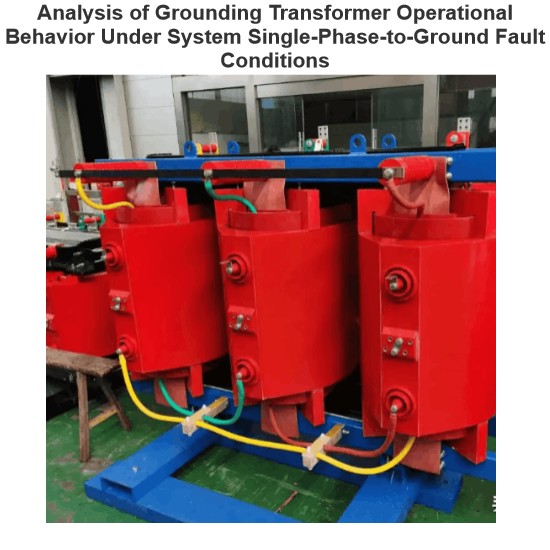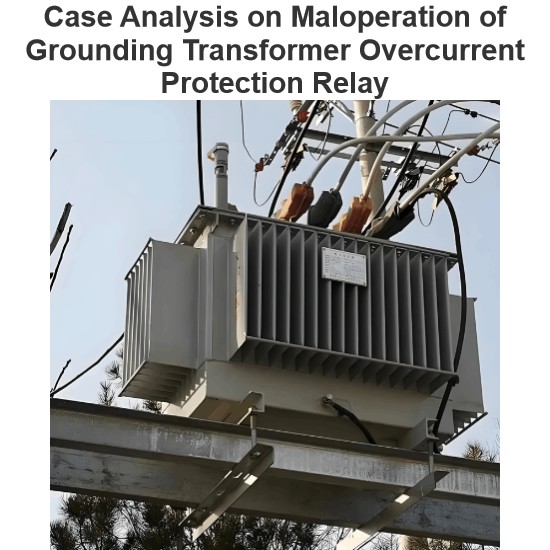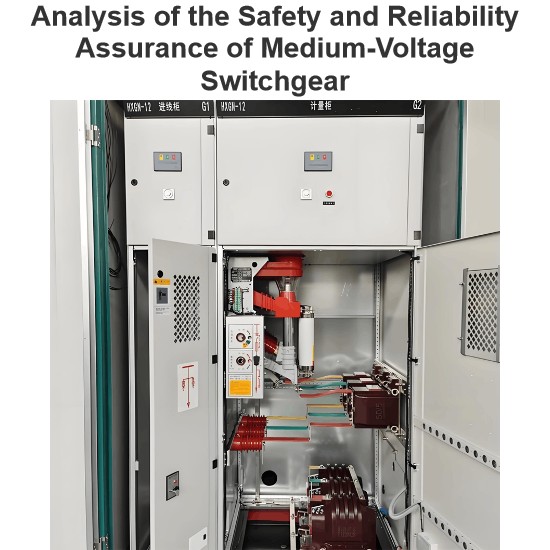Maintenance Process Regulations for 12kV Outdoor High-voltage Vacuum Circuit Breakers
Types of Maintenance Projects
The maintenance projects for 12kV outdoor high - voltage vacuum circuit breakers can be classified into three categories: major maintenance projects, minor maintenance projects, and ad - hoc maintenance projects.
Typically, major maintenance projects include the overhaul of the conductive circuit, insulation bushing, vacuum interrupter, and current transformer, replacement of seals, testing of contact pressure springs, and maintenance of the operating mechanism. Additionally, measurement, adjustment, and testing tasks also fall under major maintenance. These projects require substantial human and material resources due to their complexity and technical requirements.
Minor maintenance projects mainly involve simple replacement, cleaning, or inspection operations. For example, checking the outer surface of insulation components, cleaning debris, and tightening bolts on the enclosure and terminals. Maintenance also includes cleaning and inspecting the operating mechanism and transmission parts, and checking for insufficient lubrication.
Inspecting the stroke of auxiliary switches and the burn - out condition of switch contacts is another part of minor maintenance. It also covers checking for loose screws on electrical and control circuit terminals, tightening them in a timely manner, and ensuring no screws are loose or missing. Cleaning and repainting rusted parts of the enclosure are also considered minor maintenance tasks. These minor projects usually do not demand excessive human resources, materials, time, or cost.
Overall, ad - hoc maintenance projects can be divided into three types: conductive circuit maintenance, insulation circuit maintenance, and projects determined according to specific fault conditions. These faults occur infrequently and are unpredictable. Although ad - hoc maintenance projects may not have a large - scale impact, they are often sudden. Therefore, equipment maintenance personnel should pay close attention to them and promptly carry out troubleshooting operations once problems arise.
Common Faults
Faults in the Circuit Breaker Body
The common faults in the circuit breaker body mainly manifest as excessive loop resistance or poor insulation. Firstly, the common causes of excessive loop resistance include improper switch closing, insufficient contact main pressure springs, excessive loop resistance in the vacuum interrupter, and poor contact at the conductive contact surfaces.
The occurrence of these influencing factors can lead to an increase in loop resistance, which may not only cause malfunctions or damage to the outdoor high - voltage vacuum circuit breaker but also directly reduce the reliability of power supply if not addressed promptly.
Faults in the Spring - operated Mechanism
The faults of the spring - operated mechanism of 12kV outdoor high - voltage vacuum circuit breakers can generally be categorized into failure to close and failure to open. Regarding the failure to close, the faults can be further subdivided into issues with the closing iron core (the mechanism operates normally, but the closing iron core fails to operate properly), mechanism problems (the mechanism malfunctions while the closing iron core is normal), and combined problems with both the mechanism and the closing iron core (neither the mechanism nor the closing iron core can operate reliably).
For the situation where the mechanism operates normally but the closing iron core does not, common causes include fatigue of the closing spring, jamming of transmission components, damaged parts, or the inability of the half - shaft and the sector plate to tightly engage. When the closing iron core is normal but the mechanism fails to operate properly, there are two possible reasons: the energy - storage spring has not been charged, or the transmission components are jammed and parts are damaged. The reasons for the non - operation of the closing iron core may be the loss of power supply to the closing iron core, an open closing circuit, or jamming of the closing iron core.
From the perspective of failure to open, the two manifestations of the fault are as follows: the opening iron core operates but the circuit breaker fails to open, and the opening iron core does not operate. Generally, there are two main reasons for the situation where the opening iron core operates but the circuit breaker fails to open: the opening spring shows significant fatigue and cannot rebound effectively, and the overlap amount between the sector plate of the opening iron core and the half - shaft is excessive. The main reasons for the non - operation of the opening iron core include poor power supply, an unobstructed opening circuit, or jamming of the opening iron core.
Faults in the Permanent Magnet Operating Mechanism
The faults of the permanent magnet operating mechanism of 12kV outdoor high - voltage vacuum circuit breakers can also be analyzed from the aspects of failure to close and failure to open. The causes of the failure - to - close fault include damage to the closing coil, incorrect connection of the positive and negative poles of the closing coil, poor contact of the closing circuit power supply, or severe jamming in the mechanism or transmission system. The causes of the failure - to - open fault mainly include damage to the opening coil, incorrect connection of the positive and negative polarities of the opening coil, poor contact of the opening circuit power supply, or jamming in the transmission system of the permanent magnet mechanism.
Corresponding Fault Treatment Methods
Treatment Methods for Common Faults in the Circuit Breaker Body
If the fault of the circuit breaker body is manifested as excessive loop resistance value, it may be due to improper adjustment of the over - travel of the vacuum circuit breaker. Maintenance personnel can adjust the closing spring of the mechanism to ensure that the mechanism returns to the closed position, keeping the working pressure of the movable and static contacts of the vacuum interrupter within the required level.
If the loop resistance value remains excessive even after the over - travel is adjusted to the normal range, it is likely that the contacts of the vacuum interrupter are severely damaged, and the vacuum interrupter should be replaced. If the problem is not resolved after the above operations, maintenance personnel need to check other contact surfaces of the conductive circuit, and tighten or replace them immediately if looseness or damage is found.
When the circuit breaker body has poor insulation, the treatment methods can be carried out from three aspects: clean the dirt or foreign objects on the circuit breaker body to ensure that the insulation of the body is not affected by external environmental factors; check the vacuum degree of the vacuum interrupter, and replace the vacuum interrupter in time if a decrease in vacuum degree is detected; effectively check the open distance of the vacuum interrupter, and adjust or replace it in time if the open distance is found to be unreasonable.
Treatment Methods for Common Faults in the Operating Mechanism (Spring Mechanism)
For the closing iron core and mechanism in the failure - to - close fault, there are generally three treatment methods. First, for the problem of fatigue of the closing spring, equipment maintenance personnel should replace the spring in a timely manner to ensure the elasticity of the closing spring. Second, when dealing with the jamming of transmission components and damaged parts, check the parts of the transmission system, and determine whether replacement is necessary by promptly identifying the existing problems of the transmission system parts.
Third, if it is found that the half - shaft and the sector plate cannot be tightly engaged, the corresponding measure is to adjust the engagement amount between the half - shaft and the sector plate.
For the problems of the uncharged energy - storage spring or damaged parts due to jamming of the transmission components when the operating mechanism of the closing iron core does not operate, the measure is to check the motor for burnout. If the motor is burned out, it should be replaced immediately; if the motor is not burned out, equipment maintenance personnel should check the wires of the energy - storage circuit for looseness or damage, and take appropriate adjustment measures in a timely manner to ensure that the problem is solved at the earliest.
If the failure - to - open fault is caused by fatigue of the opening spring during the operation of the opening iron core or excessive overlap between the sector plate and the half - shaft, equipment maintenance personnel should first adjust the opening spring to check whether the problem can be effectively solved. If the problem persists, consider replacing the booster spring.
If the problem is that the opening iron core does not operate, equipment maintenance personnel should adjust the opening iron core to check if it can be solved. If not, then consider whether the opening iron core needs to be replaced.
Treatment Methods for Common Faults in the Operating Mechanism (Permanent Magnet Mechanism)
In case of a failure - to - close fault, the corresponding treatment method is to check the coil in a timely manner for damage, measure the extent of the damage, and determine whether the coil needs to be replaced. If the positive and negative poles of the closing coil are connected incorrectly, adjust the movement. If the fault is caused by the closing circuit, check whether the power supply of the closing circuit has poor contact or is damaged.
If damaged, repair or replace the circuit power supply in time. Finally, check the body, and use a moderate disassembly method to check the body, which can help detect in a timely manner whether there is jamming in the mechanism or transmission system.In case of a failure - to - open fault, for example, if the opening coil is damaged, check whether the coil needs to be replaced or repaired.
If the positive and negative poles of the opening coil are wrongly connected, adjust the movement. If the fault is related to the contact of the opening circuit power supply, check the opening circuit power supply for damage. If damaged, replace the opening circuit power supply. Finally, if there is jamming in the mechanism or transmission system, also use a moderate disassembly method to check the body for treatment.
Hey there! I'm an electrical engineer specializing in Failure and Maintenance. I've dedicated my career to ensuring the seamless operation of electrical systems. I excel at diagnosing complex electrical failures, from malfunctioning industrial motors to glitchy power distribution networks. Using state - of - the - art diagnostic tools and my in - depth knowledge, I pinpoint issues quickly. On this platform, I'm eager to share my insights, exchange ideas, and collaborate with fellow experts. Let's work together to enhance the reliability of electrical setups.













